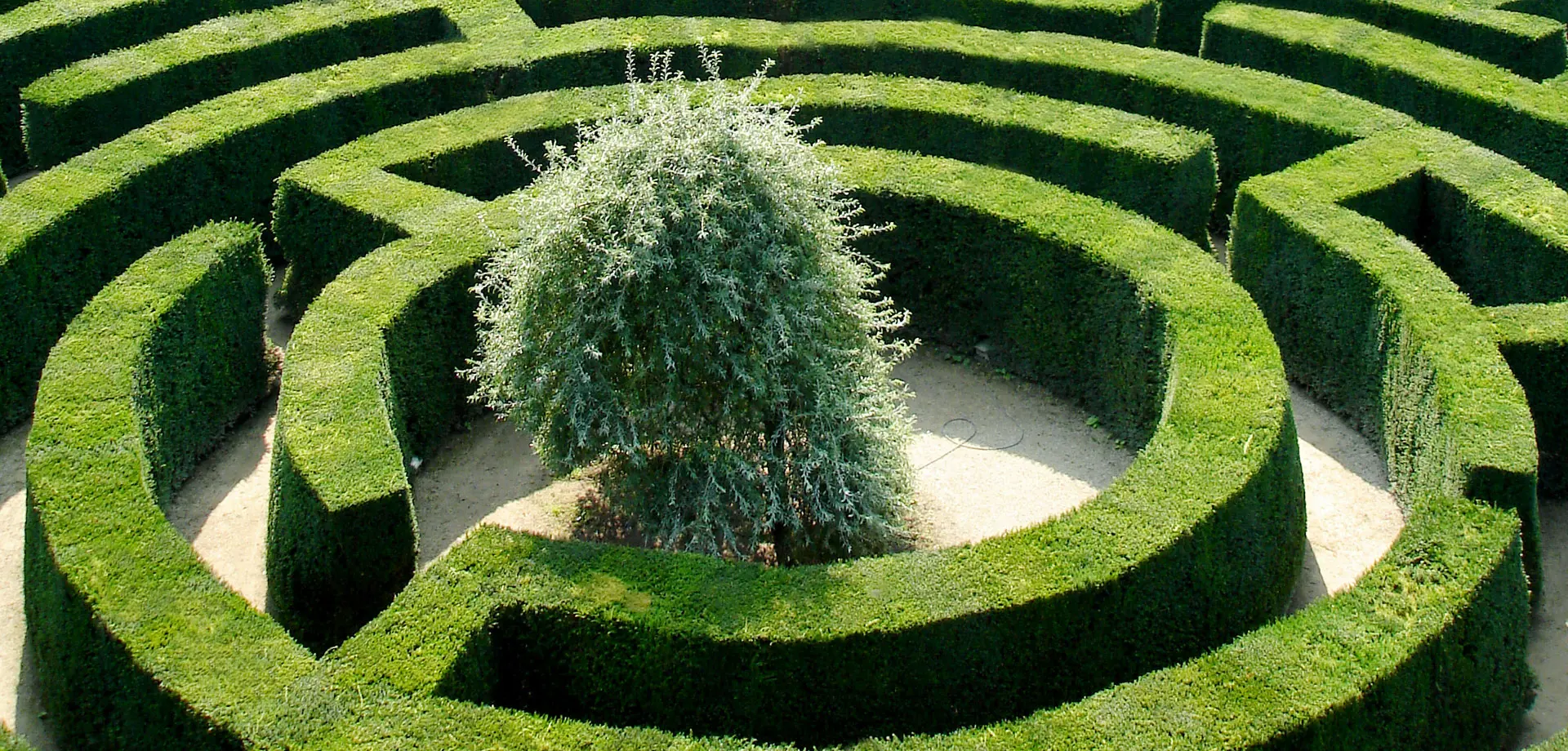Designed by Denis Fisher, the then Comptroller, in 1962 for the 11th Duke, 1,209 English yews, Taxus baccata, were required to complete the Maze.
In the 1920s flower beds were laid out at each end within the remaining walls of the Great Conservatory, with paths through and around them. The planting has changed but the beds remain. In the four central beds at the north end there are Russell hybrid lupins, Lupinus Russell Hybrids, and late summer and autumn flowers are planted in the beds that surround these. At the south end, the outside beds are planted with Michelmas daisies, Aster. The inner beds are interchanged with tulips in spring, and dahlias in late summer until the frosts.
During the 1980s, the Hundred Steps were created. This long, straight ascent runs uphill from the Maze and is aligned on the centre of the Maze. Halfway along it is interrupted by a lone monkey puzzle, left as a dramatic incident in the view by the clearance of the surrounding vegetation. The Greek Altar, discovered by the then head gardener Jim Link and his team in the mid-1980s during clearance work, has been put at the top of the steps, on the Arboretum Walk, to encourage you to stop and look west, across the Maze to admire the park and surrounding woods.
Duchess Deborah had a human sundial installed (1990) at the north end of the Maze, after seeing one illustrated in a magazine. There is a flat stone with the names of the months cut into it. You stand on the relevant month and your shadow falls on the time of the day, which is engraved on bricks at the proper angle.



